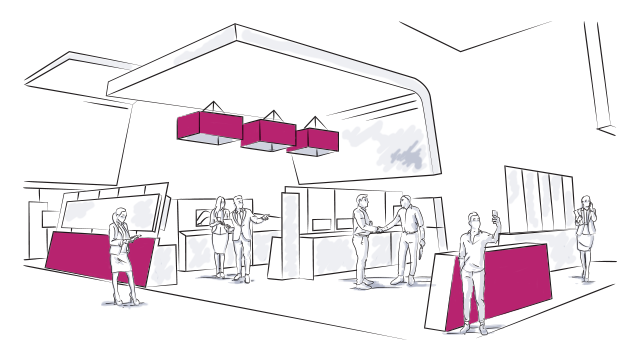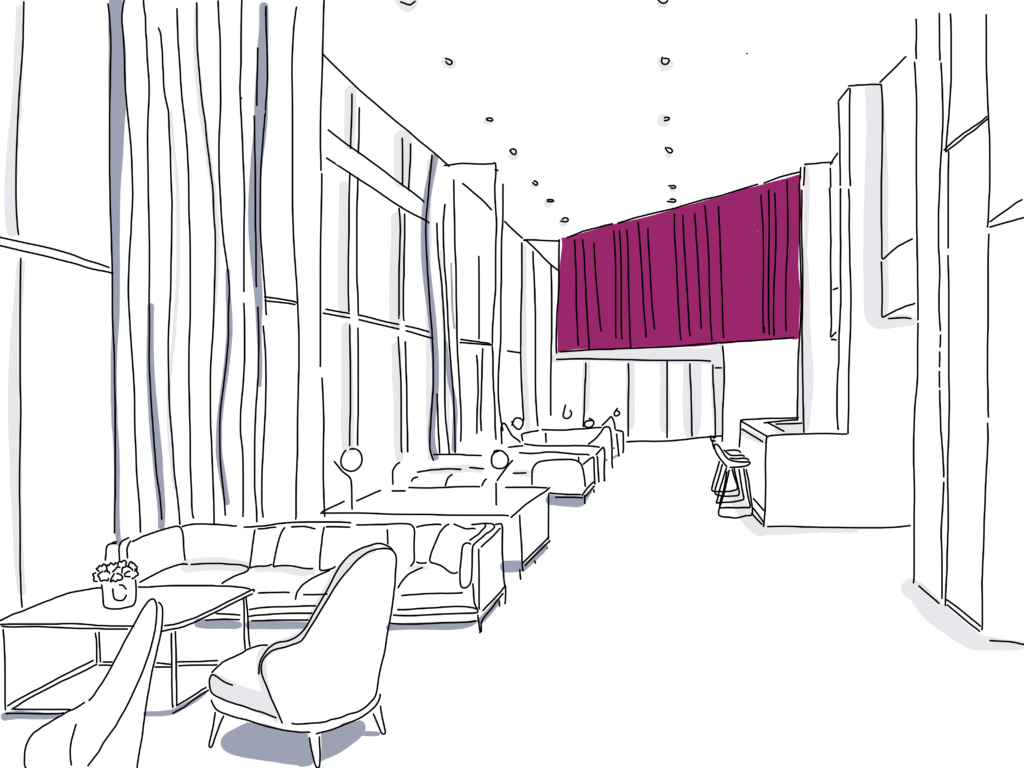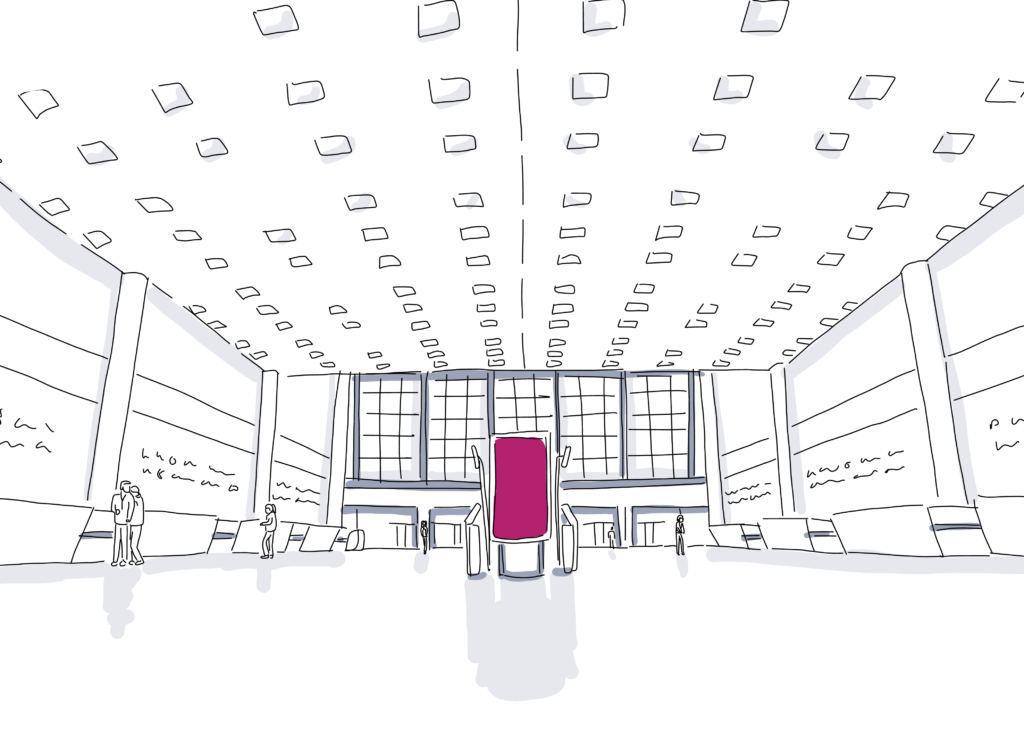
15 Technology Upgrades Your Convention Center Needs Now
I think the way that we learn is changing now, said Samuel J. Smith, managing director of Minneapolis-based, Interactive Meeting Technology. We have this need for more collaborative environments and spaces, and that’s where conference centers can really set themselves apart from other meeting venues.
Smith hit the nail right on the head. With an increasing demand for speed and high-quality graphics, this is a factor that can make or break booking an event if the technology requirements are more than your venue can offer.
Here are fifteen emerging technologies currently being used to help convention centers worldwide meet the growing tech needs of their clients:

1. Bandwidth
Why is bandwidth important for wireless connection during your event? Bandwidth is the way smartphones, computers and tablets can transfer data, at optimal speed, over an Internet connection. In the meetings and events industry, more bandwidth means more people doing more things online at faster speeds. As the movement to hybrid meetings increases, the need for fast data transfer skyrockets due to the incorporation of streaming video, remote presentations, social media, conference apps and webcasting. How do we measure the bandwidth of a venue’s wifi? The Apex Event Bandwidth Workgroup is developing site inspection tools to do the trick.
2. 3D printers
If you’re planning a remodel in the coming years, you’ll want to consider bringing some 3D printers onboard.
Adam Paulitsch, the designer and renovations professional responsible for such convention centers as the Anaheim Convention Center (among many others), had this to say about 3D printing: From a purely architectural perspective, 3D printing is slowly becoming the standard for the design process. In school, you’re taught about building models and prototyping, but I would say that approximately 90 percent of the models we build use 3D printing.
He also goes on to explain that 3D printers are turning renovation planning from a two month long process into a four or five day long process. And, because 3D printing is so inexpensive, it’s also saving convention center developers thousands of dollars.
3. Distributed Antenna System (DAS)
When Schaumburg Convention Center in Illinois opened in 2006, the first problem they encountered was the reliability of wireless connectivity. After witnessing attendees standing by windows or doorways to get a signal, the center upgraded to distributed antenna systems (DAS). DAS is made up of hundreds of antennas, placed in vital areas of the facility for a wider range of wireless network coverage. As Erin McGrath, an AT&T spokeswoman, explains DAS, It’s compared to a cake, where the antennas are layered. Instead of having just one antenna, there are several around the facility.
These systems have been installed in large venues, such as Navy Pier, the United Center and the Merchandise Mart, and O’Hare International Airport in Chicago. Before the 2015 NFL Superbowl, the Phoenix Convention Center installed these antennas, with the help of Smart City Networks, to serve as the Super Bowl media headquarters.
4. Virtual reality experiences
If your convention center often hosts sports or entertainment industry related events, a VR booth (or 10) might soon become a requirement. Not only do they help your venue stand out, they’re just plain fun. Besides video gaming, VR booths can be used to facilitate activities like viewing construction sites, enjoy an immersive meditation session, and show off large products.
It’s also worth noting the virtual reality doesn’t need to be expensive. Thanks to products like Google Cardboard and the Oculus Rift, VR is more accessible and budget friendly than ever before.
5. Smart building systems
App-controlled facility settings is one technology upgrade that customers are already going to expect because they’re already using it at home. Whether it’s adjusting speaker volume, regulating room temperature, or monitoring security cameras, a smart building system is a very valuable addition for event planners looking to maximize their investment.
But really, the idea of smart building systems can often be broad. In addition to the ideas we already mentioned, convention center managers should also consider offering things like open parking spot beacons in garages, remote controlled window shades, and room booking software. Anything that uses technology to give event planners more power over their immediate environment is sure to be a plus.

6. Telepresence
Telepresence is defined as a set of technologies, such as high-definition audio, video and other interactive elements that enable people to feel or appear as if they were present in a location they are not physically in.
In our new video-centric world, video conferencing and virtual meetings are estimated to sustain a growth of 9.36% from 2014 to 2020. Portals such as Skype, Apple’s Facetime, or Google Hangouts are the go-to’s for video conferencing by companies because they don’t cut into their budget. However, these are not fit for bigger meetings that require a large amount of bandwidth.
Jim Harnden, chief information officer for Thunderbird Executive Inn & Conference Center in Glendale, AZ, used telepresence for an event with 80 different attendees and a speaker located in India; We used a 15-foot projection screen so that the entire audience could see everything. We also had microphones built in everywhere so everyone could really engage and pick up on the conversation,said Harnden. Thanks to new high-definition technology,screens that are more or less life-sized in scale are also more lifelike in appearance. As the president and chief connector of Seven Degrees Communications, Jessica Levin, puts it, The sophistication of videoconferencing can become a ˜real conversation’.
7. Cybersecurity tools
Technology upgrades for convention centers includes your digital presence too. Which is why more and more convention centers are beefing up their data protection through cybersecurity software. Venues may even want to consider purchasing cyberterrorism or regular terrorism insurance if the clientele they cater to works in highly sensitive industries like finance or energy.
8. Convertible seating arrangements
One of the most fascinating new technologies popping up in convention centers is convertible seating arrangements. This isn’t an upgrade from the pull-out bleachers of our middle school gym days but instead is a futuristic approach with the speed to drastically transform spaces within minutes.
A new $255 million convention center opened in Lausanne, Switzerland centralized in the city’s Innovation Square: The Swiss Tech Convention Center, which is using a technology, created by GALA Systems, that can flip an auditorium from a tiered seating arrangement to a flat ballroom floor using mechanical arms to lift chairs into the air and flip them down under the floor.
9. Digital signage
Not only is digital signage more sustainable, it’s something your customers can personalize for their event. Plus, it’s sleek and sophisticated, especially when compared to its print counterparts. For example, the Austin Convention Center offers digital signage so their visiting event planners can display logos, highlight sponsors, and highlight agenda details.
10. 4K LED screens
The televisions you currently have might be performing well. But as household gadgets continue to improve, so too must your convention center screens. Offering both better pictures and better performance, 4K Ultra High Definition LED Displays are an obvious choice if you’re looking for a quick upgrade before the next season. Here’s an expert tv buying guide with honest reviews and informed suggestions.
11. Meeting room key cards
There are a lot of moving parts at events and a truly upgraded convention center knows this. Which is why they do whatever they can to streamline the venue experience for event planners and their presenters. And that includes room door cards.
Room key cards can be activated or deactivated, which means you have complete control over the comings and goings when needed for security purposes. They can also be set on timers, so if another group needs to use the room next they’ll have exclusive access. Bonus: if anyone walks away with a room card, they won’t need to worry about mailing it back. And you won’t need to worry about them sneaking back without your permission later.
12. Grätzel cells
Solar panels are so yesterday. An EPFL team led by Michael Gratzel, developed a new dye-sensitized solar cell (DSSC) that can convert electricity, similar to chlorophyll photosynthesis in plants. This new method raises the power-conversion efficiency rate to a record of 15% for DSSC, exceeding the 11% efficiency rate compared to solar paneling. The Swiss Tech Convention Center is the first large-scale hall to use this type of energy conversion. By no means should convention centers start removing their solar panels, for this is still in early stages of development, but beware that new solar energy is coming your way.
13. Hologram powered meeting rooms
It sounds crazy but this technology is now readily available for purchase. Not only do they bring that sci-fi wow factor to your venue, they’re also highly practical, especially when speakers need to conduct demonstrations or illustrate their point in 3 dimensions. This video demonstrates how NH Hotel uses holograms as an incentive for meeting room rentals.

14. 3D presentation tools
If holograms aren’t your thing, maybe these 3D presentation tools can be used to upgrade your convention center instead. All you have to do is purchase the right software and allow speakers access to it for their programs. Brands like Emaze even offer templates for those new to the technology.
15. Virtual venue tour app
Follow in the footsteps of Ticketmaster and offer your audience a 3D virtual seat view. Site visitors can click on seating charts then get a realistic image of what they’ll see when they are physically in the space. They now offer this feature for over a hundred venues that sell tickets through them all over the world. The tool also takes layout revisions or adjustments in to account for different shows. Couple this with a client-facing interactive floor plan tool and your customers will have everything they need to visualize their event in your space before they ever step foot in it.

Ready to improve your convention center this year?
If your venue doesn’t have these upgrades in the works, start now before you’re left behind! Also, be sure to check out our marketing tips and some other event technology trends you should know about.
Want to learn more about convention centers?
A convention center is a large indoor event space used to host gatherings of individuals and groups with common interest. They are typically large enough to host thousands of attendees, and the interior space is usually highly configurable to accommodate everything from trade shows to Mardi Gras balls.
Make sure you have clear goals in mind and configure your marketing to support those goals. Make sure that your messaging enables you to stand out from nearby competition, and conveys the level of quality that you provide.

